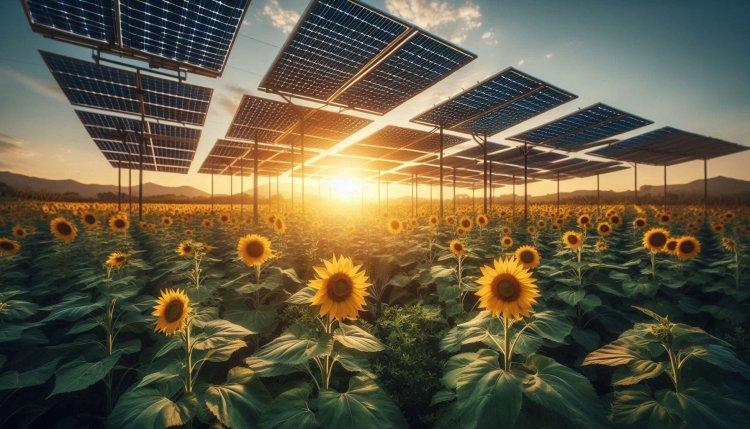Solar Energy and Agriculture: Agrivoltaics
Explore the benefits of Agrivoltaics, the innovative practice of combining solar energy production with agriculture. Enhance sustainability and productivity!

Solar Energy and Agriculture: Agrivoltaics
Solar energy has been gaining popularity as a sustainable and renewable source of energy. In recent years, the concept of agrivoltaics has emerged as a way to combine solar energy production with agricultural activities, creating a win-win situation for farmers and the environment.
What is Agrivoltaics?
Agrivoltaics, also known as agrovoltaics or solar sharing, is the practice of co-locating solar panels with agricultural activities on the same land. This integrated approach allows for the dual use of land, maximizing its productivity and sustainability.
Benefits of Agrivoltaics
1. Increased Land Use Efficiency: Agrivoltaics make efficient use of land by utilizing the same space for both solar energy production and agricultural activities. This can help address the issue of land scarcity and the competition for land between agriculture and solar energy projects.
2. Enhanced Crop Production: Studies have shown that agrivoltaics can have a positive impact on crop production by providing shade to crops, reducing water evaporation, and creating a more favorable microclimate. This can result in higher yields and better quality produce.
3. Sustainable Energy Generation: By combining solar energy production with agricultural activities, agrivoltaics promote the generation of clean and renewable energy. This can help reduce greenhouse gas emissions and combat climate change.
4. Financial Benefits: Farmers who adopt agrivoltaics can benefit financially by earning additional income from selling electricity generated by the solar panels. This can provide a stable source of revenue and improve the economic viability of farming operations.
Challenges and Considerations
While agrivoltaics offer numerous benefits, there are also challenges and considerations that need to be addressed:
1. Land Use Planning: Proper planning is essential to ensure that the co-location of solar panels and agricultural activities is done in a way that maximizes benefits and minimizes conflicts. Careful consideration of factors such as crop selection, panel orientation, and spacing is crucial.
2. Technological Integration: Integrating solar panels with agricultural infrastructure and practices requires technical expertise and careful design. Farmers may need support and guidance to successfully implement agrivoltaics on their land.
3. Policy and Regulatory Frameworks: Clear policies and regulations are needed to support and incentivize the adoption of agrivoltaics. Governments can play a key role in providing financial incentives, subsidies, and technical assistance to promote the integration of solar energy and agriculture.
Case Studies
Several successful agrivoltaics projects have been implemented around the world, demonstrating the potential of this integrated approach:
1. Japan: The Fukushima Solar Agri Park in Japan combines solar panels with blueberry bushes, creating a sustainable and innovative agricultural system. The shade provided by the panels helps protect the crops from extreme weather conditions and enhances their growth.
2. United States: The University of Massachusetts Amherst has established an agrivoltaics research project that integrates solar panels with various crops, including pollinator-friendly plants. The project aims to study the impact of agrivoltaics on crop yields, biodiversity, and soil health.
Conclusion
Agrivoltaics offer a promising solution to the dual challenges of increasing energy demand and sustainable agriculture. By co-locating solar panels with agricultural activities, farmers can benefit from additional income, enhanced crop production, and sustainable energy generation. As the world seeks to transition to a more sustainable energy future, agrivoltaics present a win-win opportunity for farmers, the environment, and society as a whole.
What's Your Reaction?

















